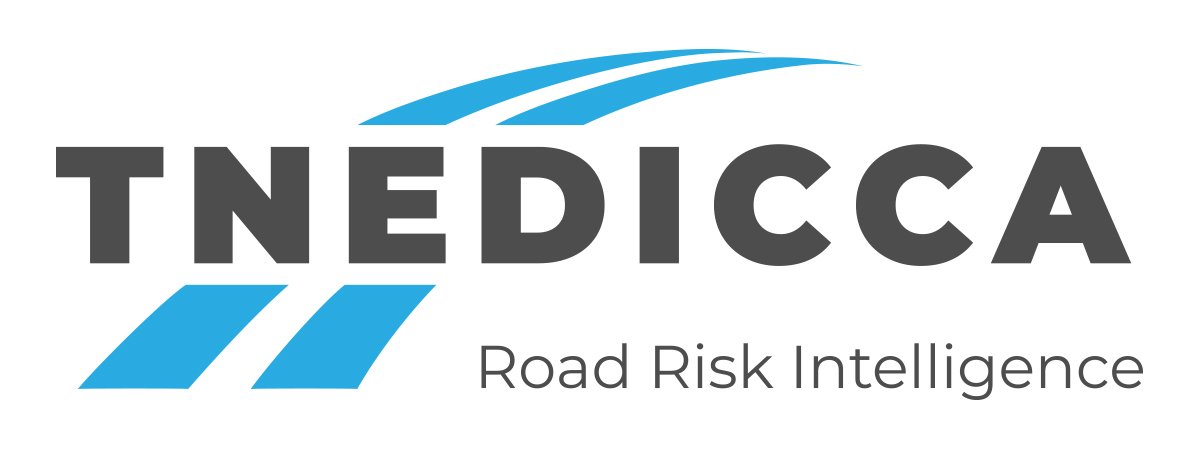Auto Insurers: Want to improve profitability in 2024? Get smarter about underwriting using crash location data
Use Case: Reducing Underwriting Risk with TNEDICCA Road Risk Scores
By Eric Nesson | January 8, 2024
The 2024 outlook for U.S. auto insurers remains challenging as loss costs continue to outpace premiums written, according to industry experts. The Insurance Information Institute forecasts that the personal auto insurance sector will finish 2023 with a negative underwriting result of $1.09 being paid out for every dollar collected in premiums.¹ The average speed of cars on the road appears to be increasing along with the severity of car accidents, reports A.M. Best.² Medical inflation, high costs for car parts and labor, larger litigation payouts and riskier driving are among top trends keeping claim costs high.
Amid these challenges, a short list of auto insurers has taken corrective actions to reduce loss costs. GEICO, for example, saw a combined ratio improvement of 13 percentage points influenced by actions taken over a 12-month period that included a 17% increase in average premium per policy, a 13% reduction in policies in force, and a 54% reduction in advertising expenses. While pricing and loss trends are shifting more favorably for some insurers, further corrective actions in underwriting and risk selection are needed across the industry, says FitchRatings.³
Underwriting Use Case: Data-Driven Risk Selection with TNEDICCA Road Risk Scores℠
A large, non-standard regional auto insurer (referred to as “Company A”) was seeking solutions to improve business performance in light of industry challenges. Like many auto carriers, Company A began trimming costs while strategically slowing the rate of new business growth to better balance their portfolio with improved risk selection. Additionally, Company A recognized the need to manage near-term coverage gaps for its personal auto policies.
Company A was intrigued by TNEDICCA’s solutions for reducing insurance loss costs using crash location data and analytics. TNEDICCA Road Risk Scores take a fundamentally different approach to assessing insurance territory risk. Using a combination of publicly available police crash reports and auto insurance data, TNEDICCA quantifies accident risk based on the insured’s proximity to accident hotspots. TNEDICCA has reimagined garaging location or territory rating typically based on the zip code or census block of where the insured lives. Accident hotspots are determined using police crash reports that note the address, latitude/longitude, date, and time of where accidents have occurred.
In other words, we know where the road hotspots are and the likelihood of an accident occurring on a particular road segment. We know where the bad intersections are, dangerous curves, narrow roads, bad roundabouts — and how many accidents have occurred in those locations across the country. Knowing whether the insured lives near a high-risk, accident-prone intersection is a more accurate way of determining risk with more than 85% of accidents occurring less than 20 miles from an insured’s garaging address. Our massive database of more than 30 million crashes covers 94% of the U.S. auto market.
TYPICAL AUTO RATING TERRITORIES BY ZIP CODE
SAME RISK FOR ALL POLICYHOLDERS WITHIN A ZIP CODE
Company A’s retro loss analysis results showed a 30% to 50% incremental lift across various perils, including collision, property damage, and comprehensive and bodily injury. However, even with significant gaps now identified, Company A was challenged to address any rating / pricing changes to their personal auto lines product, given a two-year cadence linked to their recent policy management upgrade. Additionally, Company A cited concerns regarding Department of Insurance (DOI) regulatory requirements in a key state. Still determined to extract immediate value from TNEDICCA’s Road Risk Scores, the carrier pursued a creative solution to sharpen its underwriting.
Company A now accesses TNEDICCA’s Road Risk Scores at point of sale using built-in requirements and controls to slow down the underwriting process and reduce the number of high-risk policies. Company A is still able to write new business — but in smaller volumes, indirectly sending the highest-risk policies to competitors. Company A also implemented a similar process for their current book of business with a “one-time book clean” to speed up the attrition of high-risk policies.
By using TNEDICCA’s Road Risk Scores for more accurate risk assessment, Company A reduced uncovered risks in their current book of business while adding new, lower-risk policyholders at a slower pace. By indirectly filtering out uncovered risks, Company A was further able to effectively address near-term loss gaps.
Ready to make an immediate impact on your bottom line with TNEDICCA Road Risk Scores? Let’s start a conversation.
1. “Trends and Insights: How Inflation Affects P/C Insurance Premium Rates – and How It Doesn’t,” iii.org, February 2023, https://www.iii.org/sites/default/files/docs/pdf/triple-i_trends_and_insights_inflation_02092023.pdf
2. “What’s Driving the Rise in Auto Costs,”bestsreview.ambest.com, October 2023, https://bestsreview.ambest.com/edition/2023/october/Auto-Costs-Underwriting-Losses-and-Private-Passenger-Insurers.html?altsrc=2
3. “Auto Insurer Prospects Improving Amid Price Hikes, Moderating Loss Severity,” fitchratings.com, November 2023, https://www.fitchratings.com/research/insurance/auto-insurer-prospects-improving-amid-price-hikes-moderating-loss-severity-30-11-2023
Eric Nesson is Chief Growth Officer at TNEDICCA. Set up a meeting to learn more about Road Risk Intelligence.
TNEDICCA [ti-NED-i-kuh] is an insurtech company that provides auto insurers with proven solutions for next-level territory rating, pricing and underwriting using crash location data models. Our mission is to reduce future road accidents using location-based data and predictive analytics to assist auto insurers, carmakers, navigation service providers and last-mile delivery companies.



